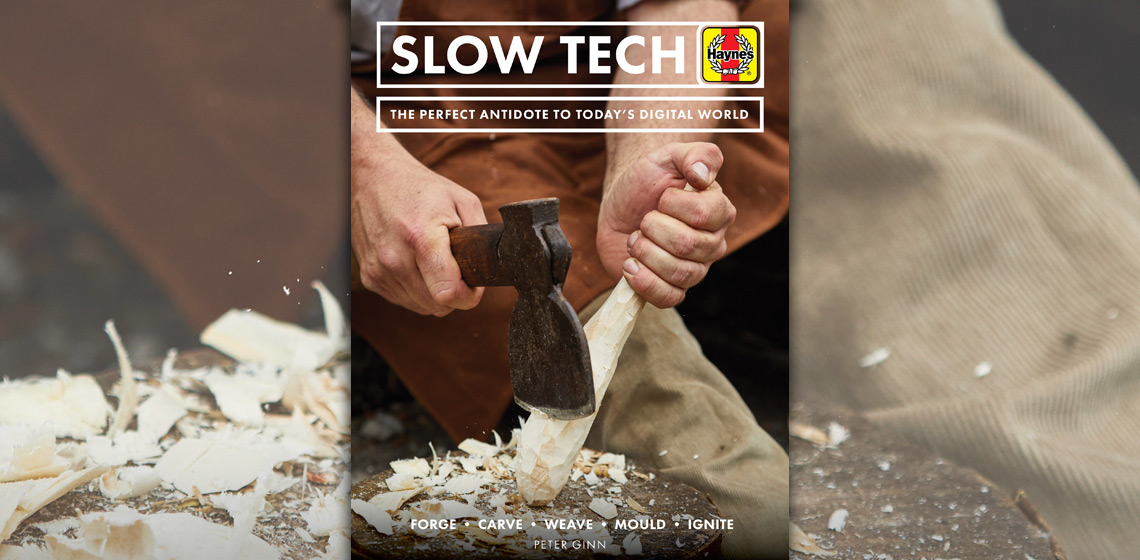
Slow Tech by Peter Ginn is a guide for step-by-step experimental archaeology. It is more a manual than a text or reference book, clearly showing the chaîne opératoire for potential experiments to try at home. Each of the five chapters includes a brief introduction to the relevant topics, followed by a series of experiments with clear procedure instructions and lists of required equipment. The chapters cover fire, earth (mainly ceramics and salt), wood, stone and water. Each chapter is very ‘picture-heavy’ and has insets that show points of interest about the subject matter.
Slow Tech is written in an easy style which is ideal for the young reader, such as those at school or in children’s groups like scouts and forest schools. An outstanding aspect of this book is the excellent photography, as each section and experiment is photographically recorded so that the reader can copy most of the processes to achieve reasonable results. Great emphasis is placed on personal protective equipment and Health and Safety requirements, although some of the cutting techniques will require refinement if they are to be taught directly or indirectly to the readers.
Experiments involve charcoal making, metallurgy, ceramics, cooking, construction, basketry, knapping, ancient stonewalling, music and water preparation. Most of the primitive skills in this book share their historical ancestry with archaeology and overlap with what is commonly known as bushcraft, and so it may appeal to two distinct demographic groups of readers.
It is evident that the author is more versed in some techniques than in others, but each experiment is clearly explained and demonstrated. A high skill level is not always required to replicate the experiments, but some are more complex than others (despite the author making them look easy). The mixture of ancient, primitive and contemporary skills and equipment enables the archaeological context to be reflected in modern life. This is evident in the last chapter about water, where the author describes ancient brewing techniques but also makes a steamboat toy and uses plastic bottles.
Whilst any review about this book would be positive, there are some aspects that will leap from the page to anyone with previous knowledge. The firelighting chapter is not as thorough as it could be for the ‘first-time’ fire lighter to succeed every time. It is also clear that more effective techniques are available to safely carve wooden spoons and achieve better results using the tools provided. If this manual were designed for adults who want to produce genuinely high-quality products and artefact replications, then it would require far greater detail. As a book for the novice adult to take part in activities with young people it is perfect (except for the brewing).
From the scientific and artistic aspects of archaeology, this book is a superb introduction aimed at involving more people in experimenting with traditional and ancient techniques. Little is mentioned of the ‘who, what, when, where and why’ of archaeology, but the ‘how to’ is a true inspiration for the next generation of experimental archaeologists. The author has made a career on television presenting experimental archaeology programmes and this book strikes at different audiences, but with the same undercurrent of enthusiasm for the subject.
Reading Slow Tech is an excellent way to begin a journey into experimental archaeology, but the processes described do occasionally suffer from a lack of accuracy. Publications of this sort often limit the number of pages, photographs and sections per chapter to make the book easier to read. It succeeds in this respect, but consequently it ceases to be useful for academic purposes. This book is worth having in a personal library to serve as an inspiration for experimental archaeologists. It promotes reflection on why replications are important and encourages the reader to start experimenting.
Book information:
Peter Ginn. 2019. Slow Tech: The perfect antidote to today's digital world (Hardback). Publisher: Haynes Publishing Group. Number of pages: 160, ISBN: 9781785216169, 26 EUR